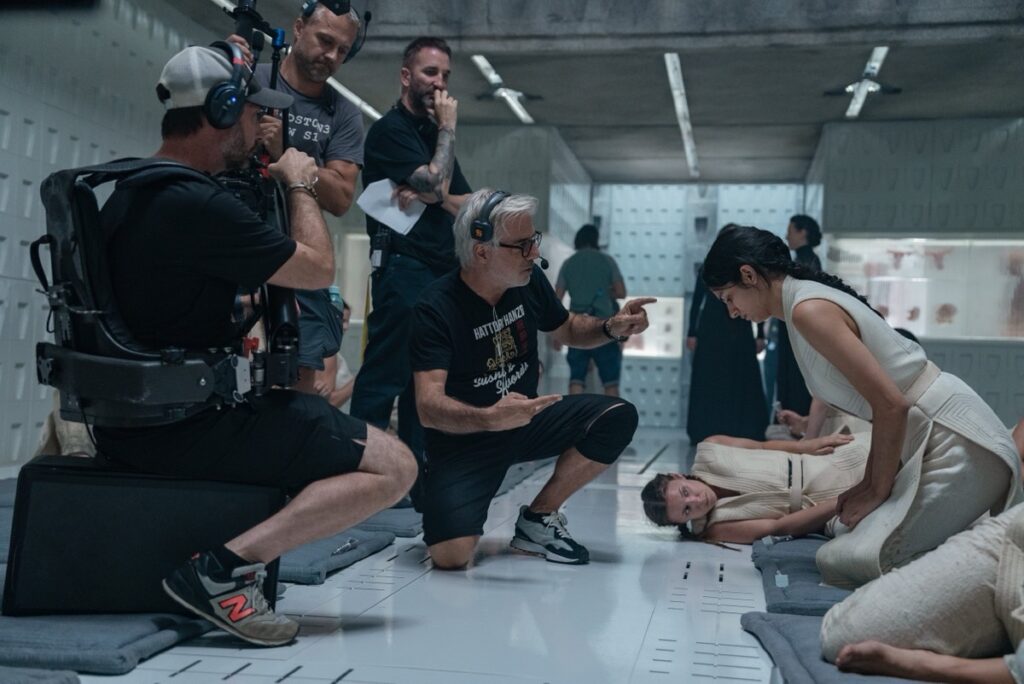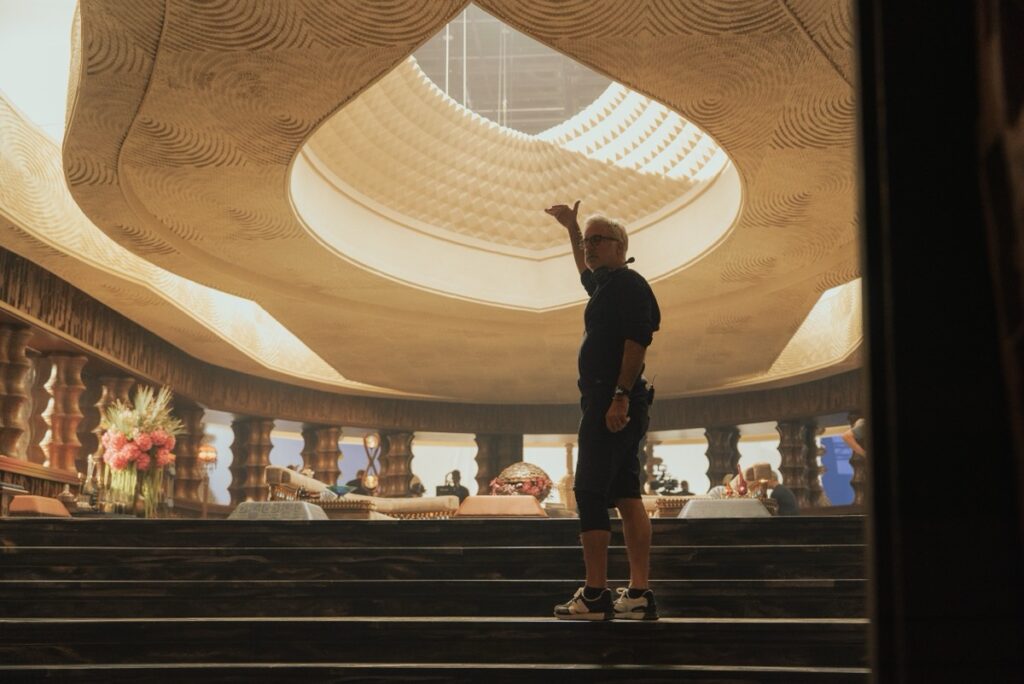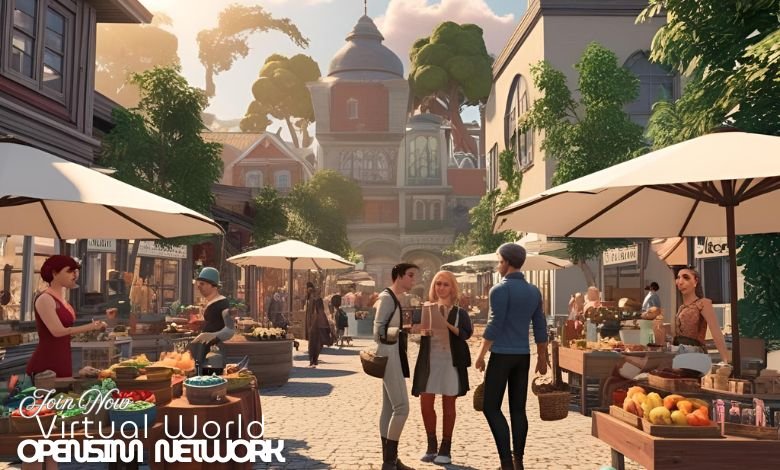How the worlds of Dune: Prophecy got their distinctive looks


Attila Szvacsek/HBO
Pierre Gill tests the lighting for a scene on set.
Attila Szvacsek/HBO
Lead cinematographer Pierre Gill created distinctive looks for all the different worlds and environments in Dune: Prophecy
Attila Szvacsek/HBO
Pierre Gill tests the lighting for a scene on set.
Attila Szvacsek/HBO
Ars Technica: You also did some work on the film Dune: Part 1. How was it different working on a TV series set in the same sweeping fictional world?
Pierre Gill: It’s a different game, a different schedule, and it’s also a very different approach because the scenes are different. There’s not so many subplots. But it’s still the same scope. We had as many sets and studios and everything. So it’s a big challenge to be able to keep the style, make it look good, light the actors. It’s part of the reality of the [director of photography’s] decision-making. You have ideas in your head of what you want to do, you have a dream, but it has to be feasible, realistic. So then you make compromises and figure out the best way to keep that style. There’s also multiple directors, there’s a showrunner. So the decision-making is less centralized.
Ars Technica: How did you go about setting the series apart from Villeneuve’s films, especially since it’s a prequel?
Pierre Gill: It’s set 10,000 years before, so it could have been extremely different. But it’s not a good idea to do that. First, the audience wants to see Dune because they love Denis Villeneuve’s movie. Second, it’s a complex story and it’s better not to get lost into something. It was not a good idea to do that in our mind. So we stayed not far from the movie so the audience can just sit down and follow the story points. and at the moment, Of course, some people always complain, but most are just happy to follow the story. So I think we made the right choice.

Attila Szvacsek/HBO
Pierre Gill lighting a scene on set.
Attila Szvacsek/HBO

Pierre Gill/HBO
Lighting a night scene to ensure it’s not too dark.
Pierre Gill/HBO
Pierre Gill lighting a scene on set.
Attila Szvacsek/HBO
Lighting a night scene to ensure it’s not too dark.
Pierre Gill/HBO
Ars Technica: Despite the epic scope of the series, you were able to shoot as much as 75 percent of the footage in-camera. That’s quite a feat.
Pierre Gill: There’s a lot of VFX of course, but because most of the sets were so high, so big, the camera was filming people or the throne room—which is gigantic—it’s almost always in camera. For the big wide shots, there’s a set extension that is painted. So these huge sets, the Sisterhood, the library and everything, when you see all these girls wandering around in that complex of Wallach IX, that compound is pretty much on camera.
A lot of VFX is making these gorgeous shots of the world, spaceships coming down, seeing something outside the window sometimes, and then the exterior of Wallach IX, which is two big towers and a rock facade. Of course there’s the little lizard, the thinking machine, that was VFX. But otherwise it was very, very in-camera, which makes your life easier in editing and shooting—although it doesn’t make my life easier with the lighting, which would be much easier with blue screen.
Source link






